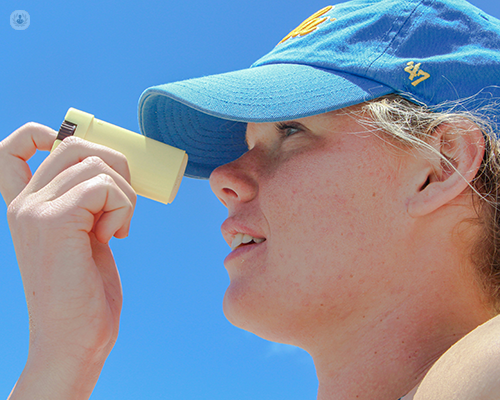Basal cell carcinoma: Characteristics, treatment, and prevention
Written by:Basal cell carcinoma (BCC), which develops in the superficial part of the skin, are the most prevalent form of skin cancer globally.
Here, Dr Paul Farrant, renowned consultant dermatologist and dermatological surgeon, offers an expert insight into the intricacies of BCC, discussing its characteristics, treatment, and prevention.

What are basal cell carcinomas, and how do they look?
Basal cell carcinoma (BCC) is the most common skin cancer – it is so common that there are more BCCs than all other types of cancer put together.
BCCs usually present as a slightly translucent lump in the skin referred to as “pearly”. This may have a central depression and a rolled edge, often with rather odd blood vessels that can look like the branches of a tree. Sometimes, there is an ulcer, crusting, non-healing lesion, or an area that keeps on bleeding.
BCCs can also present as a bright red patch on normal skin. Around 80% of BCCs occur on the head and neck but they can occur on arms, legs, and the torso too.
What are the primary risk factors for basal cell carcinomas?
Sun exposure and periods of sunburn, particularly during childhood and early adulthood, are the primary risk factors.
BCCs are also much more common in people who have pale skin, blue or green eyes, and who burn easily in the sun.
How are basal cell carcinomas diagnosed, and why is early detection important?
BCCs are usually detected clinically based on their characteristic appearance. Detecting BCCs at an early stage allows for them to be treated when they are small, leaving a smaller surgical scar.
What treatments exist for basal cell carcinomas, and what are their advantages and disadvantages?
Most BCCs are excised surgically with a clear margin both around and under the lesion. This is curative, often the simplest approach, and has a very high degree of success. The procedure can usually be performed under a local anaesthetic. It is slightly painful to inject the anaesthetic and there is always a risk of bleeding or wound infection.
Besides excision, there are other surgical techniques available depending on the subtype of BCC, the location of the lesion, and the individual patient. In elderly patients, it is possible for BCCs to be scraped away under a local anaesthetic using a procedure called curettage. This is very quick and requires no stitches, but there is a higher chance that the BCC can come back with time (3-5 years later).
In lesions located in high-risk areas, BCCs can be removed with a technique that checks the margins during the procedure, often referred to as Mohs surgery. This technique provides a higher degree of certainty that everything has been removed whilst minimising the removal of excess tissue, and it is particularly useful for BCCs on the nose or around the eyes. Mohs surgery is only performed by Mohs trained surgeons. The procedure can take a lot longer and the patient is usually awake.
Furthermore, radiotherapy (X-rays), cryotherapy (freezing with liquid nitrogen), and topical creams like Imiquimod can be used for certain types of BCCs, which may avoid the need for surgery altogether.
Radiotherapy is painless, but the skin will still need to heal after the treatment and this can be a bit uncomfortable. It often requires multiple visits over 1 - 2 weeks of treatment.
Cryotherapy and the topical creams are only used for the superficial subtype of BCC. Cryotherapy will often cause a blistering of the skin which can be painful.
The topical creams often cause inflammation of the skin with redness, swelling, and crusting. It is a treatment course that can last 4 - 6 weeks, during which the skin area can be sore or uncomfortable, as well as unsightly, for the entire duration of the treatment.
How can people prevent basal cell carcinomas, and why is consistent skin monitoring vital?
The best way to avoid developing BCCs in the future is to avoid excessive sun exposure, particularly during the middle of the day, over the summer months. It is important to use high factor sun cream (SPF 50+), stay in the shade, or use clothing and hats to prevent sunburn.
If you require expert treatment for basal cell carcinoma, schedule an appointment with Dr Paul Farrant via his Top Doctors profile today.


